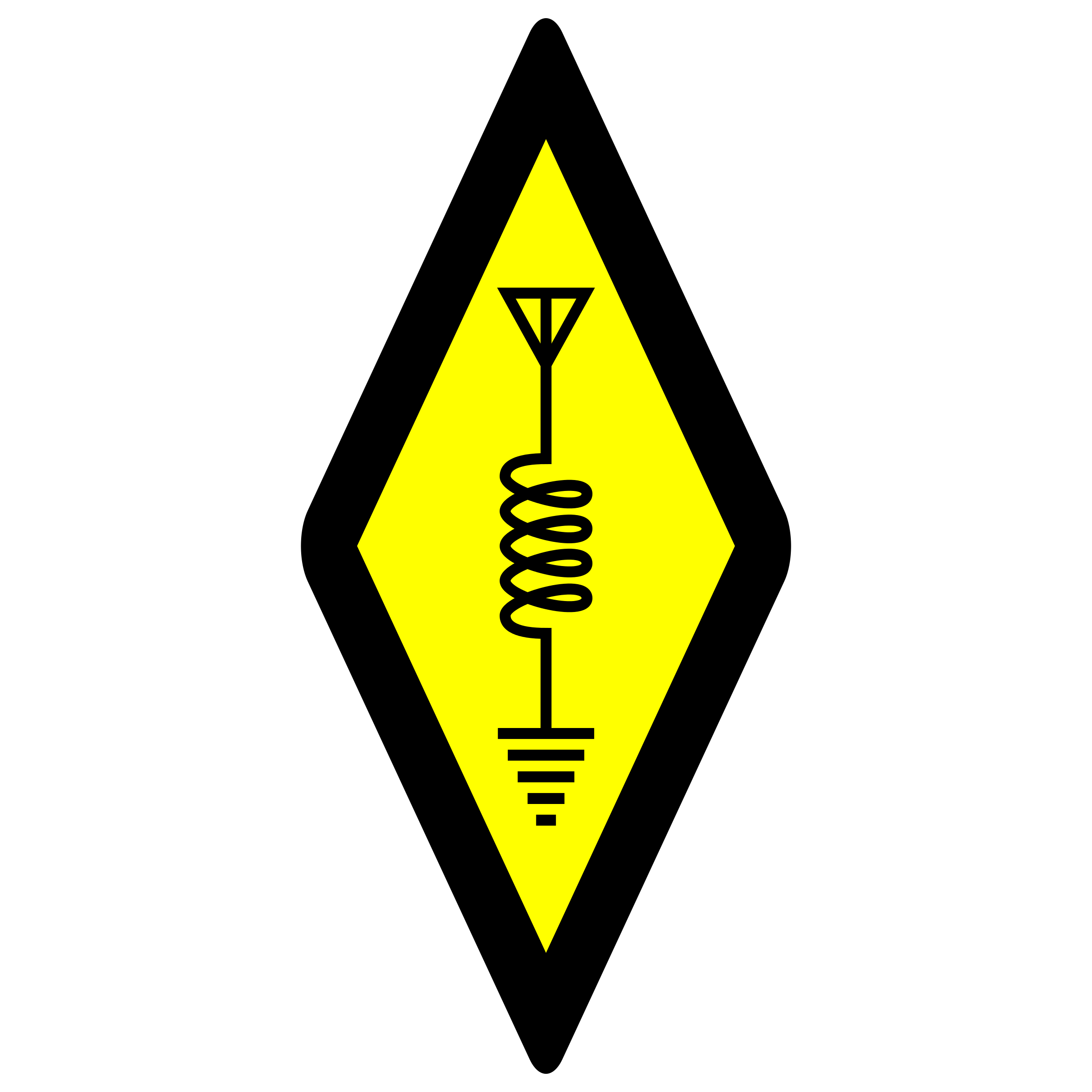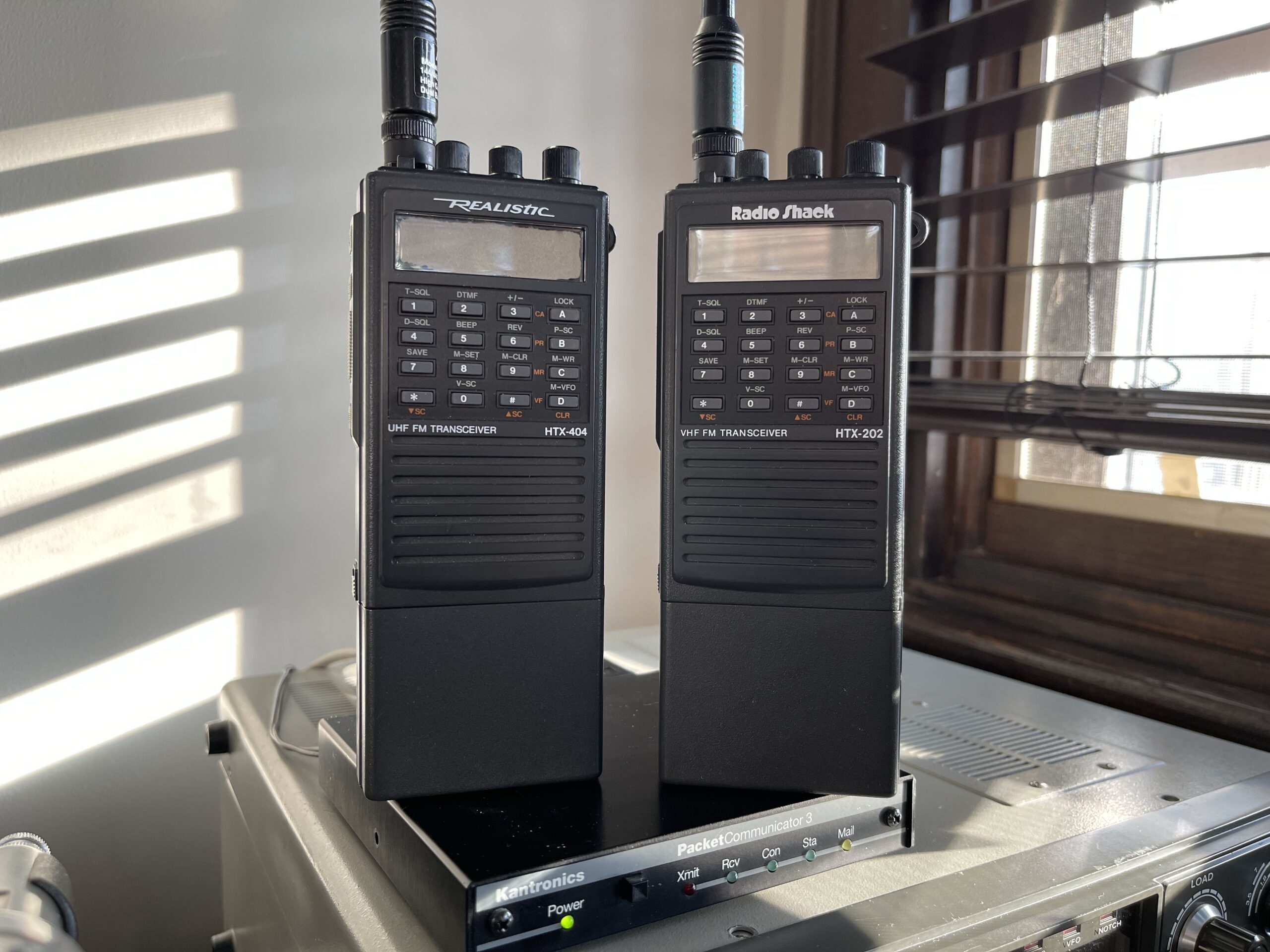
Reviving the HTX-202 and HTX-404
In 1995 I purchased my first amateur radio, a mono band 2 meter HT, shortly after I passed the technician class test. The radio was the HTX-202 from Radio Shack. There was a single repeater in the area I lived in at the time, and I would also use this HT for simplex and packet radio.
One of the first things I noticed with this HT was the excellent audio quality in receive – to this day I have yet to hear anything close to that quality. By quality, I’m referring to the full range in sound – it doesn’t sound flat or tinny like all of the other HTs I have. This amazing sound is present in both receive and transmitted modulation.
Radio Shack sold a few amateur radio transceivers back then, including mobile models and eventually a dual band 2 meter and 70 cm HT.
The HTX-202 first appeared in catalog year 1992 and the HTX-404 (a 70cm model) appeared two years later, in 1994.
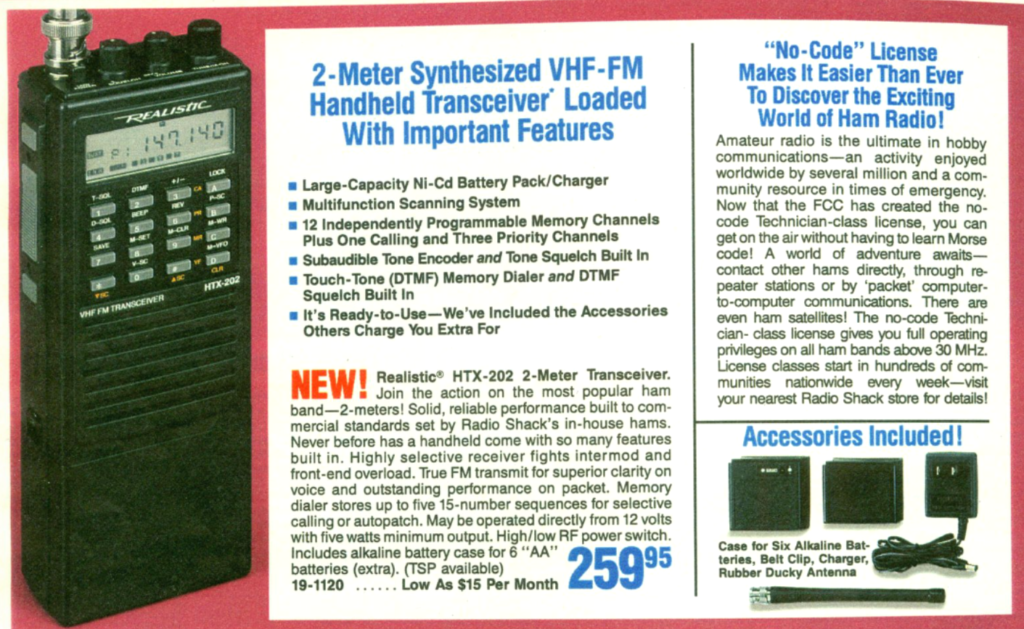
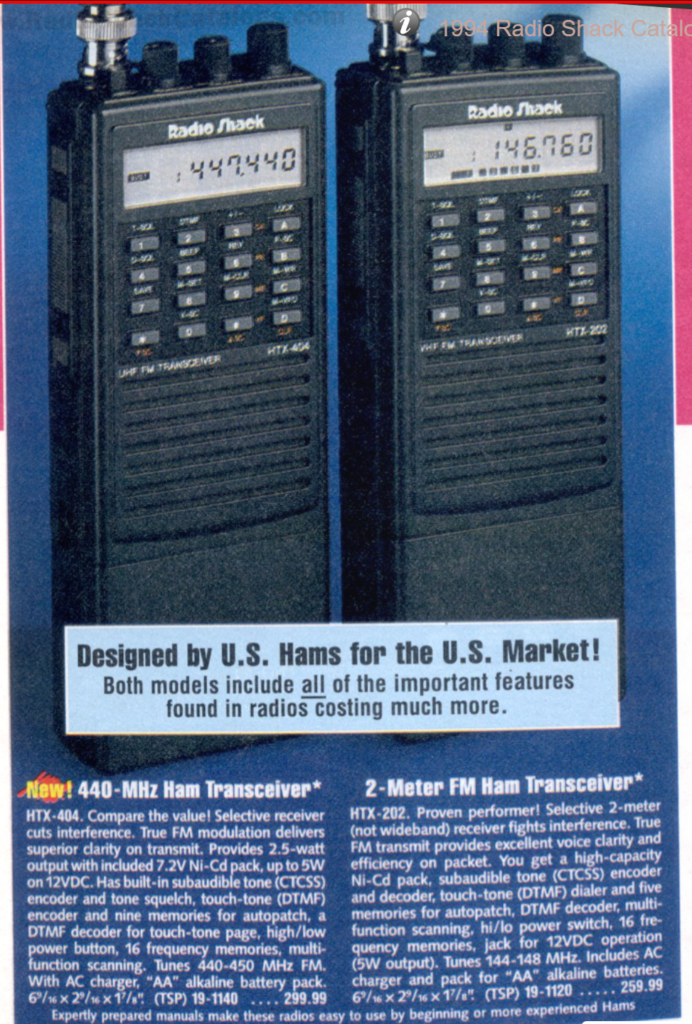
These HTs were mono band HTs, and did not include any ability to program them via a PC. All programming was done via the front keypad. The antenna connector was BNC, and they had an external 12 volt power input as an option. They also had a speaker mic connection on the top, which fits the Yaesu style 3.5mm / 2.5mm combo plug.
ER1 – Internal Battery Replacement
Up until recently, I wasn’t involved in the hobby, and I had packed the radio away where it stayed packed in a box for several moves. Recently, when I unpacked it and powered it up, ER1 appeared on the LCD screen. The owners manual describes how to clear the error, but the cause is a dead internal CR2032 battery. This battery is used to store the memories in the radio when it is turned off.
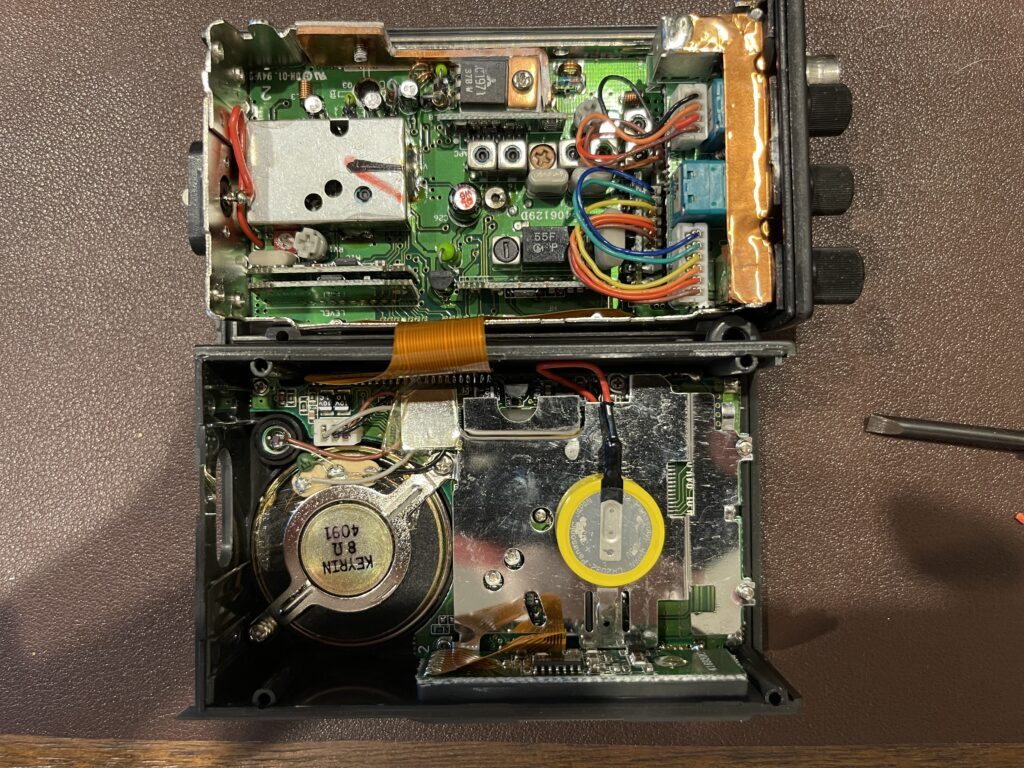
CR2032 batteries are still readily available. These batteries were affixed in the radio by a spot-welded connector on both sides of the battery. There was also a plastic sticker over the top of the battery and shrink wrapped plastic around the sides to prevent shorting.
I wanted to replace the battery in a way that would be easier to change again, if needed. I found inexpensive CR2032 battery holders which would fit inside the radio and allow the battery to be removed easily when needed.
In order to secure the battery holder in the radio, I relied on the solder connection for the negative side of the battery holder to the metal shield in the radio to hold it in place. Then I soldered the positive lead to the positive side of the battery holder. I placed some electrical tape below the positive lead in case the battery holder moved slightly, to prevent any shorting.
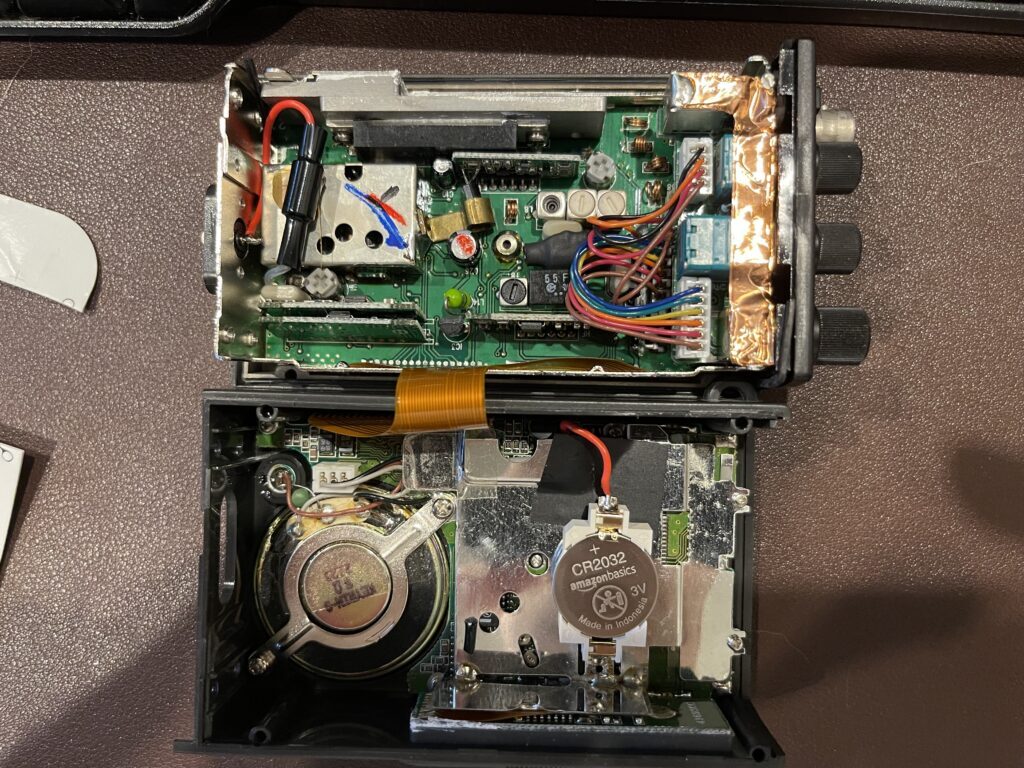
I used the same method on both the HTX-202 and HTX-404. After re-assembly, both HTs displayed the ER1 for the last time after the reset procedure.
Noisy High / Low Power Switch
A few days after I replaced the internal backup batteries, I noticed some intermittent popping or crackling with light static on my transmitted audio signal. It seemed to occur only on high power. At first I was concerned that perhaps I had a bad solder connection or other issue with the radio. However, it ended up being an issue with the high / low power switch. This switch is a push button slider switch similar to a ball point pen mechanism (sounds similar as well).
I used a tiny amount of Deoxit D5 inside the switch – I did not remove anything but the cover of the radio to spray a tiny amount in the opening of the switch. I switched between high and low a bunch of times and the popping and crackling was gone.
Battery Packs
The original battery packs in these HTs were NiCd. The attached to the bottom of the HT and had a barrel type charging port on the back.
Needless to say, after all this time, these packs were dead and not chargeable. There are replacement packs available – however they are Ni-Mh and around 8-9 volts. These radios came with a pack that can hold 6 AA batteries, which provide a total of up to 9 volts. Instead of using Ni-Mh batteries in this pack, I switched to lithium ion “AA” batteries which are now available. Unlike the Ni-Mh “AA” batteries, the lithium ion batteries produce a full 1.5 volts each. Ni-Mh batteries provide 1.2 volts each.
Power Output
The HTX-202 and HTX-404 have a high / low power slider switch. On the HTX-202, low power, the RF output is 1 watt. On high power, RF output power varies with how much DC input voltage you provide. For example, the maximum RF output of 6 watts occurs with 13.8 volts, the minimum of 2.5 watts occurs when using the 7.5 volt packs which originally came with the HT. When using the 6 AA pack with lithium ion batteries, this provides a full 9 volts of power to the HT for a 4 watt output.
On the HTX-404, the low power output is 0.5 watts. On high power, the output also varies with how much DC input voltage you provide. The maximum power output is 5 watts at 13.8 volts, and the minimum of 1.5 watts occurs when using the 7.5 volt packs. When using the 6 AA pack with lithium ion batteries (9 volts of power) provides 2.5 watts.
The lithium ion AA batteries provide more amp-hours than the Ni-Mh equivalent. These can be found on Amazon, and the brand name I’ve purchased is EBL. They’re rechargeable via a micro USB cable.
Cautions
It should be noted that these HTs can overheat when used at high power on 13.8 volts. It is my opinion that 13.8 volts on high power should be avoided. I would even limit high power at 12 volts if possible, and to be sure to attach the metal belt clip that came with the HT – this provided a bit more of a heat sink effect, which helps keep the radio cool.
I’ve read in several places that the battery pack should be removed when external aux power is supplied.
HTX-404 70cm Band Coverage
When I bought the HTX-404, I did so when it was on clearance for a serious discount. Radio shack would discount discontinued items more each month which until they were all sold. I was able to pick up this model at a bargain price.
At the time I bought my HTX-404, there was no 70cm activity in my area at all. I didn’t really make use of the HT. Recently after getting back into the hobby and fixing up these HTs, I noticed the coverage on 70cm was from 440 MHz – 450 MHz. I thought at first this was a limitation of this model.
The owners manual has a note regarding the band coverage and enabling the full band:
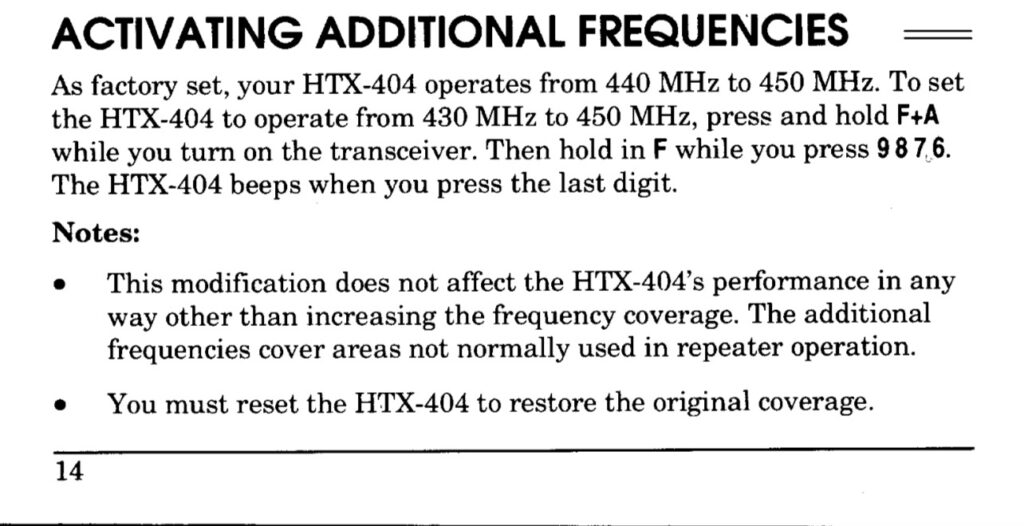
Final Thoughts
I was glad to see both of these HTs operating perfectly again. If you’re looking for one of these HTs, there are still plenty of them for sale on eBay. These were well built in my opinion, certainly for the price back then and today, if buying them used.
